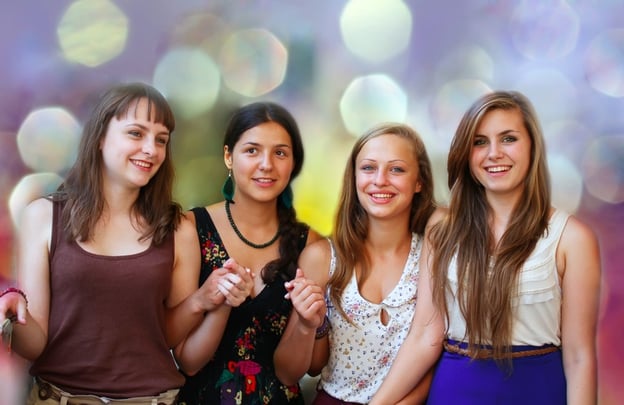
Parents of high schoolers worry about the parties their kids attend, and rightfully so. Drinking and drug use may occur at unsupervised parties; inebriated teens may get behind the wheel and endanger the lives of themselves, their passengers and innocent drivers; and alcohol poisoning, sexual assault or arrest are stark possibilities when minors drink to excess.
However, the image of a crazy high school party in which parents are on vacation and the whole school shows up for a kegger is a little overblown. Yes, the occasional party does approach out-of-control levels, but the majority of parties are smaller affairs, drawing no more than a few dozen kids, and perhaps even thrown with the blessing of parents who think teens will be safer if they drink in a supervised setting.
Just because a party is smaller doesn’t mean it’s less risky for its attendees. Kids have more room to drink and often rely on their own alcohol—including the harder stuff—rather than waiting in a keg line to get a beer. Furthermore, the less crowded a party is, the more opportunity for teens to find a secluded spot to do drugs. And the one thing that often breaks up bigger parties before they get more dangerous—the police—may not be a factor at a smaller party where kids can keep the noise to a dull roar.
So what really goes on at high school parties? They aren’t much different than when today’s parents were teens themselves—though that might not be of much comfort for many of you. What is most important is taking an active interest in where your kids are going, if a party will be supervised and setting firm rules dictating no drinking or drugs.
Teen Alcohol Statistics
According to the 2016 Monitoring the Future study conducted by the University of Michigan, 19.9 percent of 10th-graders and almost a third of 12th-graders reported using alcohol in the month before they were surveyed. Although these numbers continue a downward trend—in 1991, the percentages were a frightening 42.8 and 54.0 for grades 10 and 12, respectively—it’s still too many kids drinking and potentially getting into a car. The numbers of 10th- and 12th-graders who had been drunk dropped to 9.0 and 20.4 percent, respectively, but also remain a serious concern. Take any five high school seniors—one of them, on average got intoxicated, maybe at a party, in the past month. That’s scary, especially if you worry the one is your child.
Teen Marijuana Statistics
Pot may be more prevalently smoked at high school parties simply because there are few other opportunities for teens to do so. In the same Michigan survey, marijuana use actually climbed for 12th-graders in 2016, up from 21.3 percent to 22.5 percent. And the numbers are far worse than 25 years ago, almost doubling in that time. If you don’t remember seeing much marijuana smoked at parties in your youth, know that times have changed on this front.
Dangerous Behaviors at Parties
Big or small, supervised or unsupervised, high school parties with drugs and alcohol can be dangerous. For starters, drinking games (beer pong, quarters and so on) can get teens drunk in a hurry. Inexperienced drinkers may not know when to stop, and the consequences range from the obvious vomiting and passing out to, more seriously, alcohol poisoning.
Second, sexual assault is a huge issue at parties with drugs and alcohol. Impaired teens might be taken advantage of and not be able to fight back; also, their calls for help may not be heard. Their drunken “friends” may become more aggressive and make bad decisions (such as not believing when a person says “no.”).
Third, alcohol lowers inhibitions and leads to bad decisions all around (not just sexually). Fights, accepting challenges to drink more or try a stupid stunt, or, most disturbingly, driving while impaired—or passengers not recognizing that the driver is impaired—are not only stupid choices, but unsafe behaviors.
Offer a Ride Home
Even the best teens may end up at parties where alcohol and drugs are present. Those same teens might not drink or smoke but be affected by others’ poor choices. When confronted with a dangerous situation, you want your kids to call you for help, even if they have been drinking. Therefore, make this deal with your children: If they need a ride home because they are impaired, because their ride is impaired or simply because they want to go and none of their friends wants to leave, they can call you and you will pick them up, no questions asked until the next morning. Consequences from you may be imminent, but they don’t have to be immediate—better to bite your lip on the ride home than visit your child in the emergency room, police station or morgue.
Safe Homes, Smart Parties
Unsupervised high school parties are an obvious problem, but so are supervised parties at which parents allow attendees to drink. Our Safe Homes, Smart Parties campaign details the risks of high school parties with alcohol, and offers strategies for parents and teens to work together to throw supervised parties that are fun and free of booze and drugs. If you can tolerate a little mess and some possible loud music, your kids and their friends can enjoy a party—and stay safe at the same time.
Has your child’s high school had a problem with unsupervised parties?

